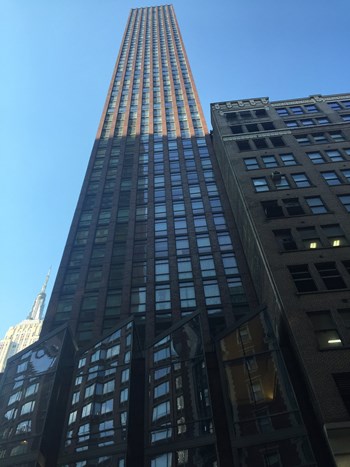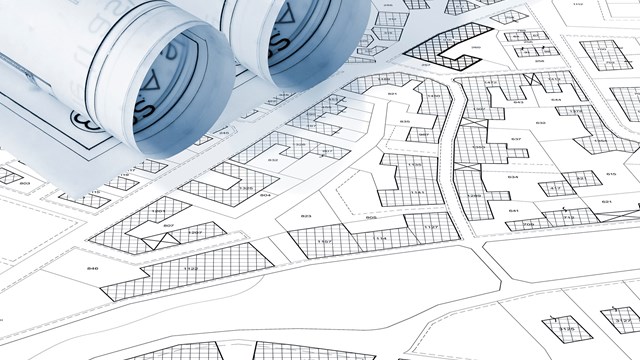
Residents of the Sky House condominiums at 11 E. 29th St., a
55-story building that once towered over its Madison Square Park neighborhood,
have launched a successful zoning challenge against a newly proposed condo
across the street, temporarily halting the project.
A report by urban planner George M. Janes submitted to the New York City Department of Buildings revealed that the new J.D. Carlisle construction at 15 E. 30th Street, is proposed to be raised 155 feet above the street, so that it will top out at 760 feet or more than 70 stories high. To house ventilation and mechanical equipment in that void, the building will be placed on stilts.
Janes says that he has been retained by the neighbors, and asked by their law firm, Marcus Rosenberg & Diamond, LLP, to review the plans for any red flags. “The neighbors were concerned. They hired an attorney and the attorney reached out to me to essentially look at the drawings to see if I could find issues with the zoning that the building department had made.”
Raising the Floor
This unique building method is a recent tool that developers are using to raise the height of their residential projects, according to Crain’s New York Business. For example, at 220 Central Park South and 520 Park Ave., mechanical spaces are housed at the bases of the buildings on floors with ceilings at least 20 feet high. “Raising the ceiling height doesn't count against the square footage that a developer is allotted,” Crain’s says, “and allows them to create a pedestal on which to stack more high-floor apartments whose expansive views command higher prices.”
“It’s very unusual,” says Janes about the plan to house the mechanicals underneath the building and put the apartments above that. “In zoning, you have an exemption for mechanical spaces. You don’t have to count them against your zoning calculations, they’re exempt. And there are things like boiler rooms or pipe chasers that go up through the building. They’re usually a relatively small percentage of the building. In this case, developers are using these spaces to either get extra height or in this case, get extra height or get up over a neighboring building on the same zoning lot so it could have legal windows.”
Janes says that building it this way would add to the construction costs considerably so it’s not for every new development.
“It’s a gimmick,” says David Rosenberg, founding partner of Marcus Rosenberg & Diamond LLP, who filed the zoning and development challenge with the DOB on the residents’ behalf. “They decided to raise the building up by creating enormously high floors. They call it a mechanical or structural void.”
A Challenging Process
While this is an as-of-right development, there will be no hearing required. However, Rosenberg says that in the past few years of the Bloomberg administration, community residents have been allowed more input into the zoning process. Receiving the findings from Janes, Rosenberg and his colleague, associate Michael Contos, took the first legal steps in what could eventually culminate in a lawsuit.
“It’s a zoning and development challenge, which we timely filed. If it is accepted in any part, the project stops until those issues are addressed and changes are made,” says Rosenberg, who added that either party can appeal the ruling further depending on the outcome. “They are pretty serious objections and they are based on problems with the plan as it was approved by DOB.”
The DOB reviewed the challenge and ruled last week issuing a notice of intent to revoke the permit on one of the seven neighbor objections, namely that the size of the outer courtyard did not comply with the zoning regulations.
The ball is now in the applicant’s court to respond to the challenge and rectify the objection, says Janes. “The applicant will have to review the plans to respond to the challenge.”
Also, the neighbors can still choose to challenge the DOB’s findings. “The one that they accepted is the one most easily remedied. It will involve a redesign of the building, which isn’t trivial but it doesn’t actually deal at all with the mechanical void, which is the major issue. They will have to decide whether to challenge that,” says Janes. “They have 15 days to submit a challenge of the findings and then the DOB looks at it and decides if they wish to reconsider.”
If that challenge fails, Janes notes that the neighbors can appeal further to the Board of Standards and Appeals.
Debra A. Estock is managing editor of The Cooperator.






Leave a Comment